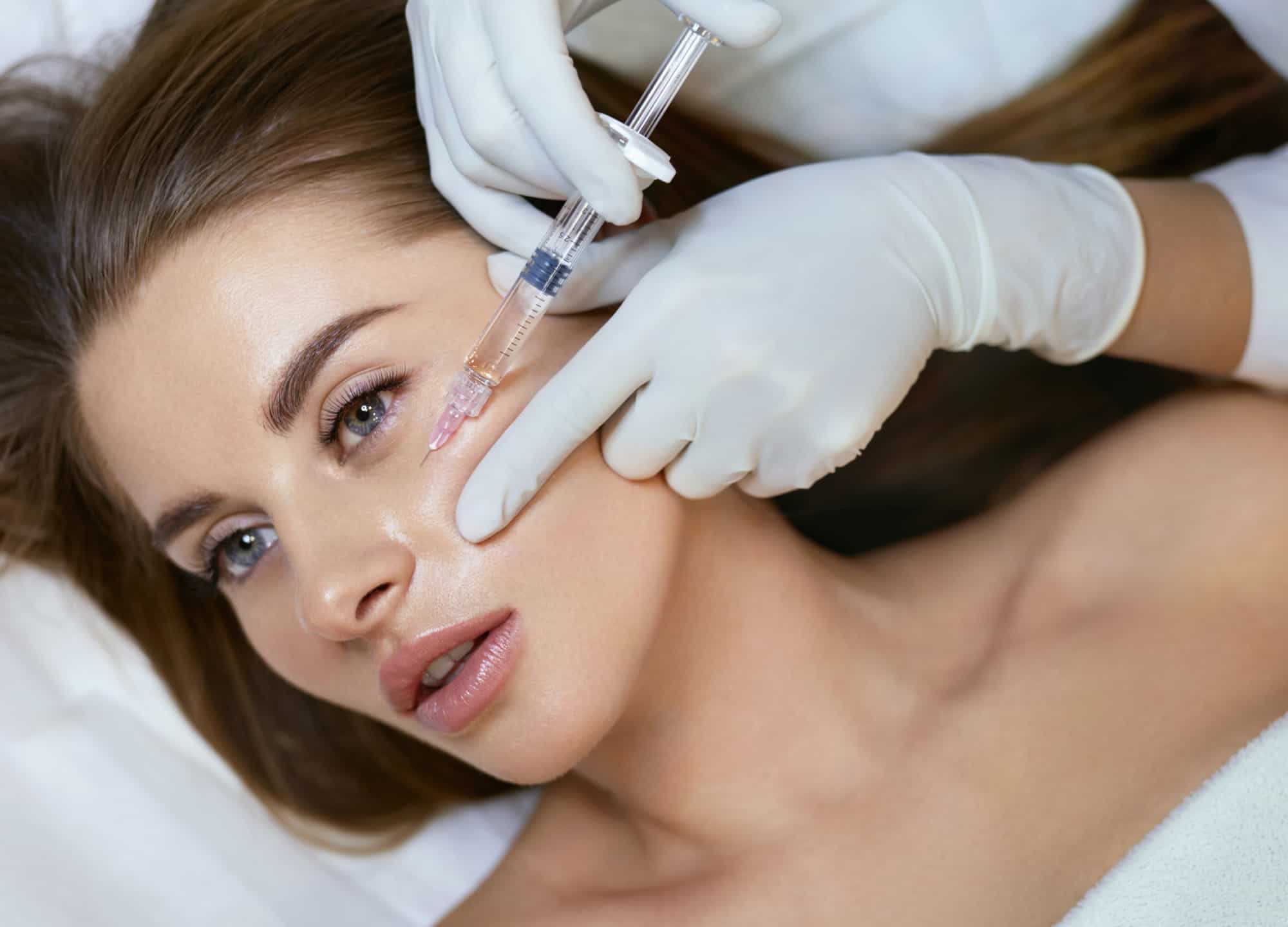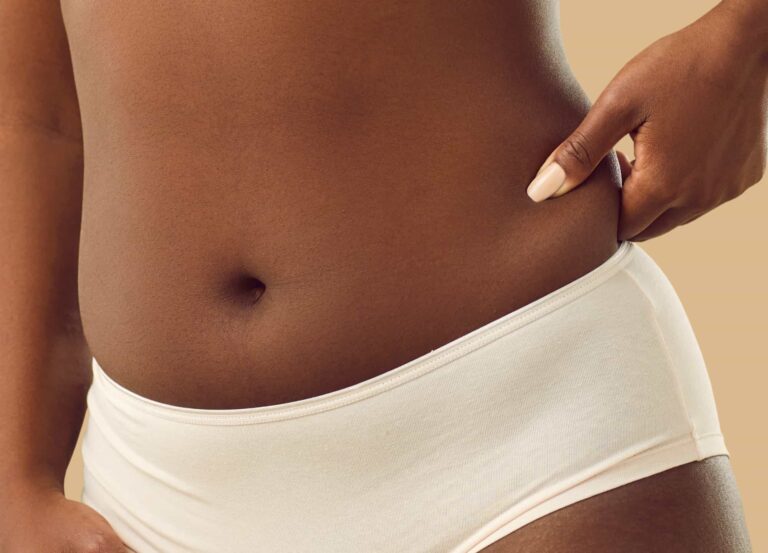Featured experts
Dr. Amelia Hausauer, a board-certified dermatologist in Campbell, California
Dr. Kian Karimi, a board-certified facial plastic surgeon in Los Angeles
Dr. Yunyoung Claire Chang, a board-certified dermatologist in New York City
Dr. Jessie Cheung, a board-certified dermatologist in Willowbrook, Illinois
Dr. Jason Champagne, a board-certified facial plastic surgeon in Beverly Hills, California
Cosmetic injectables is one of those categories where innovation is arguably lacking. By and large, it’s often new variations on the same theme: hyaluronic acid fillers, biostimulatory fillers, and neuromodulators. So when we hear about something that doesn’t fall into one of these categories, we take note.
According to Dr. Amelia Hausauer, a board-certified dermatologist in Campbell, California, the latest trending injectables point toward the aesthetic industry’s growing interest in regenerative medicine—as well as a growing interest in building a more complete portfolio of “tools” for doctors to have at their disposal.
That being said, she emphasizes that “it’s important not to throw out the baby with the bathwater. The legacy products we have come with decades of data. We know that they perform well—and safely—whereas most of the new things out there aren’t even FDA approved yet.”
So while it’s worth knowing about these trending injectables, they’re probably not taking the place of Botox or filler anytime soon. Here, more on three alternative injectables that are creating buzz.
Salmon sperm injections
You may have heard about salmon sperm injections from Kim Kardashian, who recently revealed that they were a part of her latest facial. (It was only a matter of time before she found a treatment that would outweird the Vampire Facial she put on the map years ago.)
Neither fillers nor neuromodulators, these injections fall into the skin booster category; the sperm is rich in micronutrients, exosomes, and growth factors, explains Dr. Kian Karimi, a board-certified facial plastic surgeon in Los Angeles. It contains high concentrations of polynucleotides, DNA fragments, says Dr. Hausauer. “There’s some interesting benchwork, lab studies for polynucleotides, showing that they can prevent cell death and have anti-inflammatory effects, but any science backing the benefits for human skin just isn’t there yet,” she notes.
Salmon sperm injections, most commonly marketed under the brand name Rejuran Healer, originated in South Korea and are also widely used in other parts of Asia, says Dr. Yunyoung Claire Chang, a board-certified dermatologist in New York City. While not FDA approved in the US, she says she does know physicians administering the injections stateside, adding that, anecdotally, people are happy with the results. “I’ve tried it and liked it. I think it helped with texture and tone,” she says.
Dr. Jessie Cheung, a board-certified dermatologist in Willowbrook, Illinois, is also a fan. “I was lucky enough to receive Rejuran injections in Korea less than a month ago, and my skin is still glowing, smooth, and tight,” she says. In her practice, Dr. Cheung uses Rejuran more superficially—via microchanneling, microneedling, or laser-assisted delivery—noting that her patients love how smooth, tight, hydrated, glowing, and firm their skin is afterward.
EZ Gel
After PRP injections came PRF treatment—and now there’s EZ Gel, an injectable that utilizes your own blood platelets as a gel, to add volume to the face and body, explains Dr. Karimi, who serves as medical director for the company. (As a quick aside, PRP stands for platelet-rich plasma; PRF stands for platelet-rich fibrin. They’re produced differently; PRF doesn’t have an anticoagulant added to it, and studies show that the production of growth factors is higher over a longer period of time after PRF than PRP, says Dr. Hausauer.)
In the case of EZ Gel, the PRF is heated. “This causes albumin, the most abundant protein in the blood, to unfold and quadruple in volume, acting as a scaffolding,” Dr. Karimi explains. It results in a viscosity that’s similar to that of a hyaluronic acid filler, which can also be adjusted to be thicker or thinner based on how much it’s heated, he notes. The EZ Gel is injected to add volume anywhere on the face or body, though the growth factors and exosomes in the platelets also have an impact on collagen production and skin quality.
While EZ Gel doesn’t last for years, the way many HA fillers can, Dr. Karimi says a recently completed study found that three series of injections, performed four weeks apart, yielded measurable volume results for eight months.
“This isn’t a one-and-done type treatment for people looking for big cheeks or a chin augmentation. It’s for those looking for a natural alternative to help maintain face volume,” he says, adding that it performs especially well when used for under-eye hollows and to make lips look more hydrated.
Our experts were somewhat split when it came to EZ Gel’s potential to become the next big thing. “Specific studies on EZ Gel itself as a proprietary technology are limited, but existing data supports the efficacy of PRF for skin rejuvenation,” says Dr. Chang. According to Dr. Jason Champagne, a board-certified facial plastic surgeon in Beverly Hills, California, while it’s not yet super widespread, practitioners are beginning to explore this as a natural alternative to synthetic fillers. “Given that it uses an autologous material, the patient’s own blood, EZ Gel has a more promising path toward FDA approval, especially if it can consistently demonstrate safety and efficacy in clinical trials,” he says. However, Dr. Cheung points out that because results are dependent on blood quality (which can be affected by things such as alcohol, nicotine, and aspirin), she prefers to use more predictable regenerative products and doesn’t foresee FDA approval coming anytime soon.
Patient reviews, at least on Reddit, are also a bit mixed. The overarching sentiment? Results are subtle, and multiple treatments are needed in order to achieve any kind of meaningful effect, which also doesn’t last very long. And many people also lament the ability to have EZ Gel dissolved in the event of a vascular occlusion or less-than-favorable end result.
Wharton’s jelly
Wharton’s jelly comes from the gelatinous material found in the umbilical cord, which is rich in hyaluronic acid, stem cells, and exosomes, says Dr. Hausauer, who adds that its use is not FDA approved. Still, there are providers injecting it stateside, largely for orthopedic purposes, pain management, and wound healing.
But there’s also an underground scene where Wharton’s jelly injections are being used for aesthetic reasons—in Los Angeles, in particular. “Although I haven’t used it personally, some colleagues in the field are investigating its potential as an aesthetic treatment,” says Dr. Champagne. He declined to comment as to exactly how popular it is but did call out that it’s definitely gaining attention in the field. “The high content of growth factors and stem cells offers significant potential for skin rejuvenation, improving elasticity, and reducing signs of aging,” he explains.
We spoke with Tanya Akim, an LA-based beauty editor who tried the treatment—and could not stop raving about the results. “I will only do Wharton’s Jelly injections under my eyes going forward. The biggest things I’ve noticed are lack of dark circles and improved texture. I never wear concealer anymore. And there’s just a seamless transition between my under-eyes and cheeks, where with other fillers I could see a line of demarcation,” she says. According to Akim, it’s also an incredibly popular treatment among the Hollywood elite. “Every beautiful actress I know has Wharton’s jelly injected in their face. The people who look the most natural are the ones who use Wharton’s jelly.”
All that being said, it’s probably pretty unlikely that Wharton’s jelly will gain FDA approval anytime soon: “The FDA is extremely picky about how biologic products are purified and used, making it very challenging to get any of these approved,” Dr. Hausauer points out. Dr. Champagne agrees that the source of the material adds complexity to the process though adds that Wharton’s Jelly’s potential as a regenerative treatment may drive further research and, ultimately, future approval.
Bottom line
At the end of the day, even if these three injectables don’t gain approval, there may be other injectables hitting the market soon. Dr. Hausauer notes that there are clinical trials underway for a variety of new ones, including a gene therapy that triggers collagen production owned by Jeune Aesthetics, and Tropoelasin, a precursor to elastin fibers from an Australian company purchased by Allergan. Will all of this new innovation ultimately render Botox and fillers as we know them extinct? Probably not, but we will get a host of new products that allow providers to do their jobs more effectively, says Dr. Hausauer.











